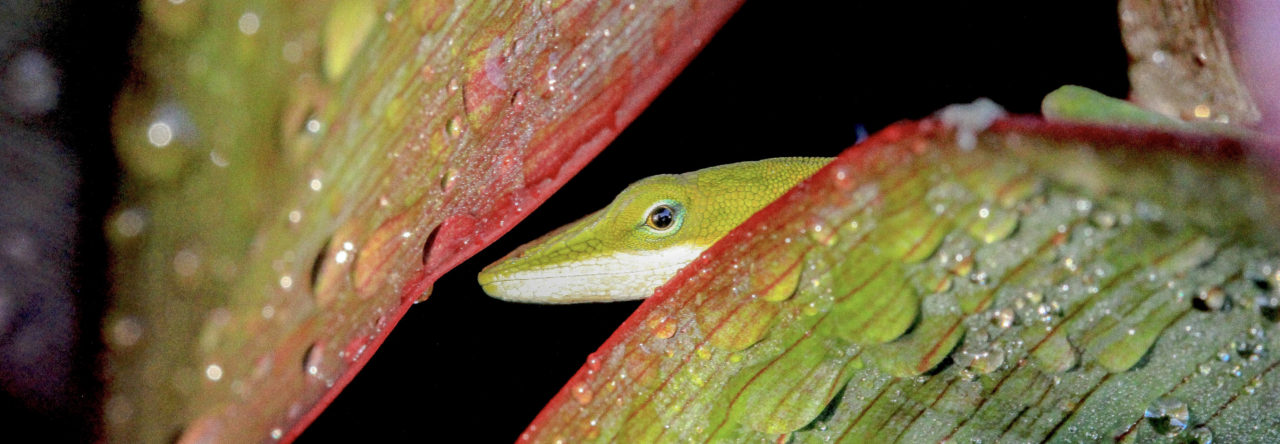Many arboreal animals get from one place to another by jumping. But there’s a problem: branches, particularly narrow ones, aren’t stiff. As a result, as the animal starts to jump by pushing against the branch, the branch gives way and bends. As a result, some of the force that could be used to push off is dissipated in pushing the branch away. One potential solution would be to avoid bend-y branches; another would to make like an Olympic high diver and wait for the branch to spring back, and then use the recoil to help launch the animal forward. Do animals use any of these tricks? Or is their jumping compromised on pliable surfaces?
Turns out that there hasn’t been much work on this, but the research that has been conducted, on birds and primates, has showed that jumping performance is, indeed, reduced on flexible surfaces and that there is no evidence for animals powering off a branch’s recoil. No work has been conducted on small animals, so Casey Gilman set out to remedy this shortcoming by examining the jump biology of the Florida green anole. You can read here about the background to her study and see some photos of the study site.
The main findings of the study can be summarized easily: 1. In the wild, green anoles frequently use very compliant (bend-y) surfaces such as narrow branches and leaves; 2. In the lab, when anoles jump, they do not use the recoil of the support to increase their jump distance; and 3. The more flexible the support, the great the reduction in jump distance.
The most exciting finding of the study, however, was something completely unexpected. The reason that lizard jumps were short from very flexible supports was not just that the support’s give wasted some of the lizard’s push. Rather, what happened was that as the support recoiled, it smacked into the underside of the tail of the launching lizard. This in turn pushes the back end of the lizard up and the front end down, and instead of sailing through the air with the greatest of ease, the lizard does an ungainly face plant, as the video above illustrates. Apparently, this happened frequently when lizards jump off of very pliant surfaces.
Who knew? It certainly makes sense, but I have to say, I’ve never seen a lizard gobsmacked by a branch as it jumps. Maybe it happens too fast to actually recognize what’s happened, but I don’t recall seeing lizards jump in such a klutzy manner. Has anyone noticed something like this in the wild?
More generally, an obvious next step is to not only measure the pliancy of the perches on which lizards can be found, but to observe their movements and see if they choose to jump from particularly stiff surfaces, relative to the ones they use more generally. Word on the street is that Gilman has already conducted just such a study, with fascinating results. Stay tuned!


Bill Bateman
Jumping without a tail from a non-pliant surface results in messy landings as the tail acts as a brake when leaving the surface so the lizard doesn’t ‘stall’ in the air. By the looks of this, caudal autotomy might give a benefit (or at least, reduce costs) when jumping from pliant surfaces as there is no tail to get smacked and knock the flight path out of skew. It might need almost total autotomy though.
Yoel Stuart
To find the paper, use the following doi: 10.1242/jeb.061838